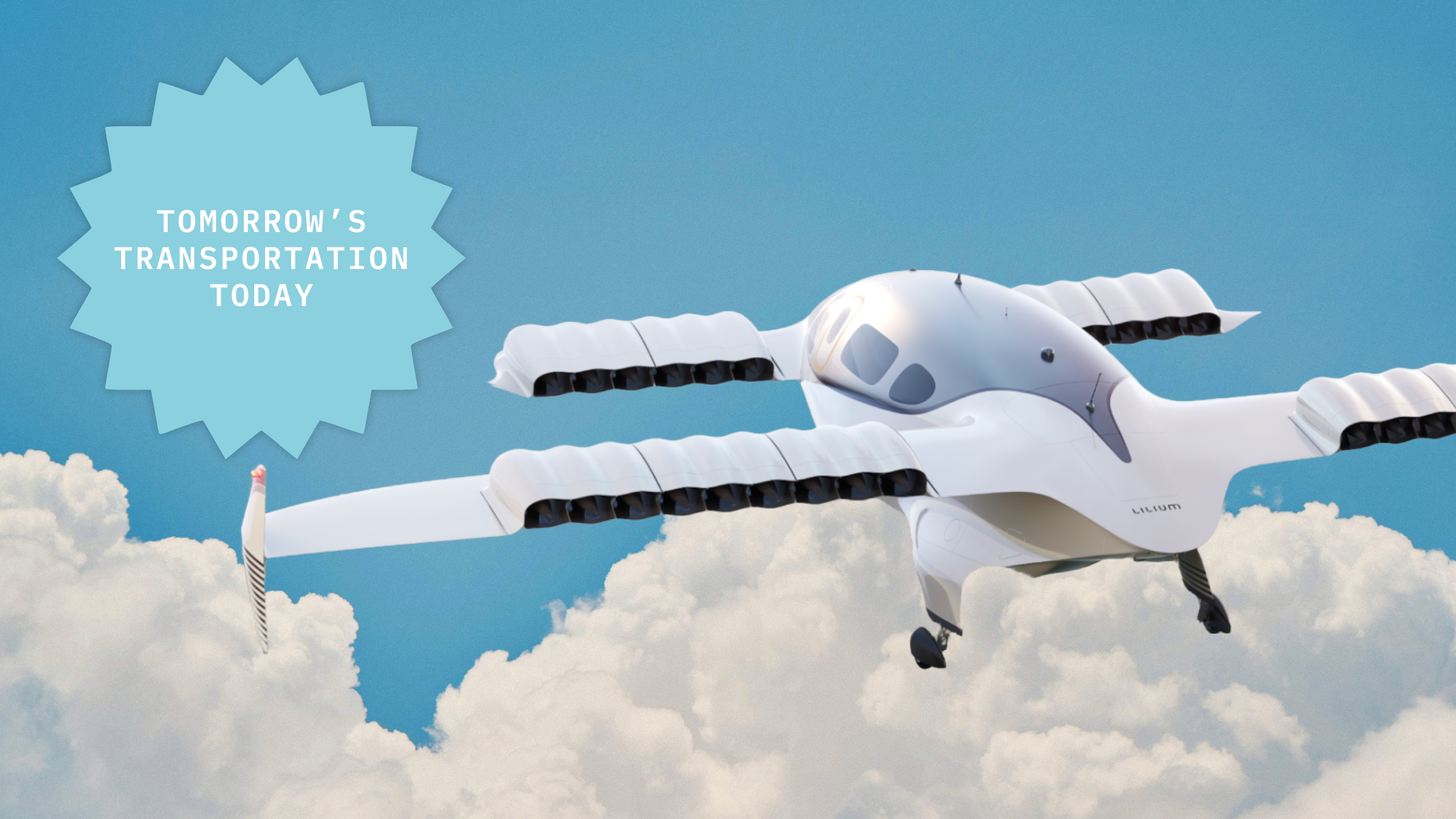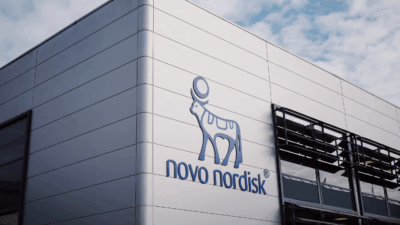The Future is Almost Now for Flying Cars and eVTOLs
Hundreds of aviation startups are funneling billions of dollars toward what they hope will be a new form of low-emission air travel.

Sign up for smart news, insights, and analysis on the biggest financial stories of the day.
Hundreds of aviation startups are funneling billions of dollars toward what they hope will be a new form of low-emission air travel: Electric vertical take-off and landing (eVTOL) vehicles meant for quick shuttles from helipads to airports or regional trips between major cities. It’s not exactly a flying car, but it’s close. And other companies are inching even closer to bridging the gap between driving and flying.
Learning to Fly
Though eVTOLs and flying cars incorporate the same mechanics as planes or helicopters — propellers, wings, jet engines — they come in a variety of designs as makers are trying to fill different needs in a nascent market:
- Chinese maker Xpeng Aeroht is working on two designs: One is a supercar with hidden propellers stored in its back, the other a lunar-lander-style eVTOL that detaches from an electric car.
- Archer Aviation and Joby, both based in California, use a design where the propellers that lift the craft into the air also tilt forward to give it horizontal push.
- Zeva Aero out of Tacoma, Washington, was originally going for a flying saucer build before pivoting to a more traditional plane design.
Optimal Designs: The various designs depend on how the craft will be used. Is it for distance travel, shuttle service, or aerial sightseeing? Is it meant for commercial or private purposes?
“It’s a new segment. There are so many inventors and so many things being tried out. Some of them work; some of them don’t,” Lilium co-founder Daniel Wiegand told The Daily Upside. “I think that’s a natural convergence in any new technology. You have 200 different concepts, and in the end, maybe five of them prevail.”
Lilium, an eVTOL maker in Munich, Germany, uses propellers and electric jet engines on its crafts. It aims to provide regional air transportation where passengers spend about an hour on board and travel anywhere between 20 to 200 miles. The jets will still be operated by licensed pilots and land and take off from designated areas.
San Mateo, California-based Alef Aeronautics, on the other hand, wants drivers to take directly to the skies from the road. Its founders knew there would be some complications, though — namely, the laws of physics.
“Firstly, a car cannot fly,” Alef CEO Jim Dukhovny told The Daily Upside. “It needs wings. Without wings, it’s not efficient. The shape of the car is one of the worst possible shapes for flying forward — it’s designed to push you down. There is a reason everybody looks like Joby and Archer — you have wings and propellers; it’s very optimal for flying.”
But Alef didn’t want to sacrifice design. “We’re not treating it as an aircraft. First and foremost, it’s an electric vehicle,” Dukhovny said. “It needs to fit in a parking space, and it needs to fit on a road.”
Alef’s design is a car with wheels, but propellers positioned where the engine and trunk normally go provide vertical lift. When airborne, the car’s body shifts 90 degrees, essentially becoming a biplane with either end of the car acting as wings and the driver’s seat becoming a cockpit.
Hop on Board
With different designs and markets come different plans to turn a profit:
- Alef wants to sell directly to the consumer, and it had received about 3,200 pre-orders as of mid-April, according to Dukhovny. He said Alef customers were early adopters of Tesla or have a fascination with the golden age of science fiction.
- Joby’s primary focus is an air taxi service. In one instance, the startup and Delta Airlines are partnering with the Port Authority of New York and the NYC Economic Development Corporation to establish operations at JFK and LaGuardia airports that should launch next year.
“Costs will be similar to what a passenger would pay for Uber Black,” Joby Head of Air Operations and People Bonny Simi told The Daily Upside. “As the service scales, costs will decrease and be more aligned with UberX prices.”
While Lilium plans to sell some jets to private buyers, it mostly intends to work with commercial operators. For example, UrbanLink recently ordered 20 Lilium jets, which will be used to connect South Florida cities like Miami, West Palm Beach, Boca Raton, and Fort Lauderdale.
Selling the crafts, which are in pre-order for $7 million to $9 million apiece, is just the half of it — literally only half the revenue stream. “Then we have a second column being the services, especially the battery replacements,” Wiegand said. “Those battery replacements over their lifetime make roughly the same revenue of the sale of the aircraft itself.”
Eventually, maybe two decades from now, Wiegand said Lilium hopes its batteries and electric jet technology will improve to the point where they can be used to power commercial airliners that travel thousands of miles and carry 100 passengers.
Startup and Take Off
Funding is never easy for startups, and it’s particularly hard for flying car and eVTOL companies. They are essentially going to investors, hat in hand, saying they want to revolutionize transportation.
“It’s easy to pitch, but difficult to close,” Wiegand chuckled:
- Investors are still interested in future air mobility (FAM) — which includes super-sonic jets and drones — but funding levels are fluctuating. Investors funneled $4.5 billion into the FAM industry in 2023, down 9% from 2022, but the number of deals more than doubled to 151, according to McKinsey & Company.
- A lack of funds has already shuttered some startups. In early 2023, Slovakia’s Aeromobil failed to acquire new financing and shut down, and Germany-based Volocopter is considering insolvency options after failing to secure new loans.
And most of the companies that went public have taken substantial hits since their IPOs. Joby is down about 50%, Archer 60%, and Lilium’s share price has fallen almost 90%.
But that doesn’t necessarily spell doom. While Joby said it lost $95 million in its latest Q1, there were some positives. It acquired an established facility in Dayton, Ohio, for manufacturing and broke ground on another in Marina, California. Joby also secured exclusive rights to provide air taxi services in Dubai for six years starting in 2026. And it’s continuing to partner with legacy businesses Delta and Toyota for financial backing, access to customer bases, and aircraft development. Similarly, Archer is backed by Boeing and Sellantis.
Wiegand said it’s no secret Lilium will need to do another round of funding this summer. “Rising interest rates in the last two years have made it quite difficult both for listed and non-listed companies,” he said. “We’ve been hit hard on the valuation, but nevertheless, we have shown we have a group of investors who continuously supported the company over many funding rounds.”
Some of Lilium’s largest investors include LGT — a private bank owned by the Princely Family of Liechtenstein — and Tencent, the Chinese conglomerate that holds a roughly 40% stake in Fortnite maker Epic Games. Wiegand says they’re also looking at loans and state funding options. Lilium expects to largely fund operations via pre-delivery payments in about 18 months.
Alef’s first and largest backer is Tim Draper, the venture capitalist who was an early investor in Hotmail, Baidu, and Tesla. “What excited him about us was our ability to completely disrupt, in a positive way, multiple industries and [potentially] create a trillion-dollar company, not a billion-dollar company,” Dukhovny said. There are only seven companies in the world worth at least $1 trillion.
When Can I Ride in One?
Flying car and eVTOL companies are trying to design crafts that fit into already existing airspace regulations — which vary globally — and they’re all still in the process of earning certifications.
But many are getting close to lift-off.
Lilium plans to conduct its first piloted flight by the end of this year before delivering jets to operators in 2026. Joby expects to launch its commercial operations in the US next year. And Archer intends to start trials for its air taxi in India next year before a commercial launch in 2026.
Alef wants to begin production by the end of 2025, and while Dukhovny admits “there’s not going to be thousands or millions of [Alef cars] tomorrow flying above San Francisco,” he does have quite ambitious goals for the vehicle, which is priced at $300,000.
“Right now, it’s low-volume, handmade, with no optimized manufacturing, so cost is high and the price is high,” he said. “I’m not saying it’s going to happen in five or 10 years, but eventually the price should be similar to a Toyota Corolla or a Ford Focus.”











